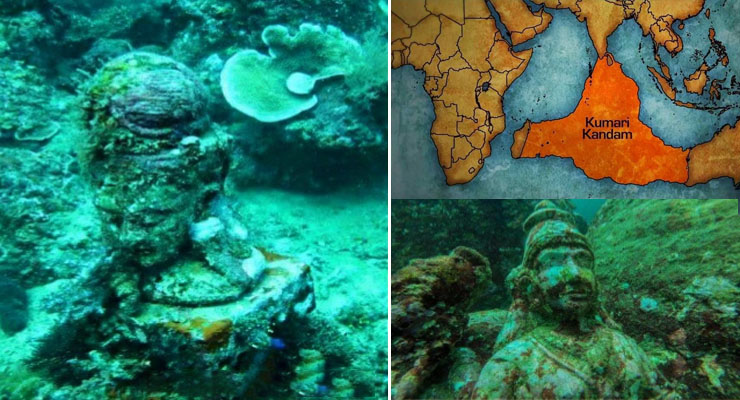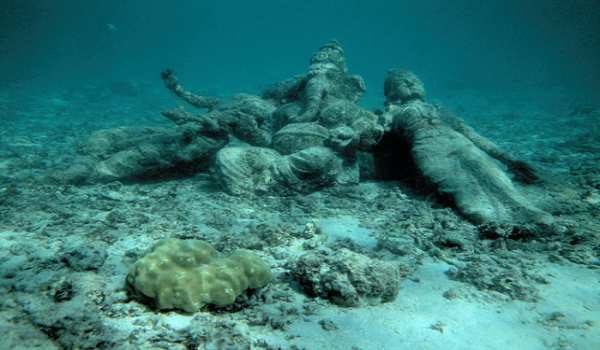You are not logged in.
- Topics: Active | Unanswered
Pages: 1
#1 2021-02-15 12:06:42
- YnitZHb
- Member
Are these Lemurian Artifacts?.
Lemurian Artifacts.
http://cjattoe.com/images/temple_lemuria.bmp
http://cjattoe.com/images/temple_of_the_wind.bmp
http://cjattoe.com/images/lemurian_icon.bmp
https://1.bp.blogspot.com/-xT5C5w5HH5Q/ … t_icon.jpg
From this site.
https://www.emeraldguardians.nl.eu.org/p/lemuria.html
And in that site is Another One.
These are Lemurian Artifacts?.
All New Age themed information have some stuff that is
true,or partially True,but one doesnt really know for sure until
one can access the Akashic Records,and talk to various Alien Sources in the
Astral Plane.
Also when in Taygetean Videos they say Mua,they refer to Lemurian Language i believe.
Is in Ashayana Deane Stuff.
These Images Are Real Lemurian Antediluvian Artifacts?:
Last edited by YnitZHb (2021-02-15 12:08:19)
Offline
#2 2021-04-01 11:23:07
- Rocketmidget
- Member
Re: Are these Lemurian Artifacts?.
Very interesting artifacts. I've never seen any of these. Lemuria was wiped out under the pacific that's why we have so many Atlantis artifacts and so few lemurian.
Where were these found?
Offline
#3 2021-05-08 07:02:40
- Dr Enoch Metatron
- Member

Re: Are these Lemurian Artifacts?.
Lemurian Artifacts.
These Images Are Real Lemurian Antediluvian Artifacts?:
greetings,
info on supposed site of lemuria.
the lost 7 nadu's.
Kumari Kandam (Tamil: குமரிக்கண்டம்) refers to a mythical continent, believed to be lost with an ancient Tamil civilization, supposedly located south of present-day India in the Indian Ocean. Alternative name and spellings include Kumarikkandam and Kumari Nadu.
According to the Kumari Kandam proponents, the continent was submerged when the last ice age ended and the sea levels rose.
In the 19th century, a section of the European and American scholars speculated the existence of a submerged continent called Lemuria, to explain geological and other similarities between Africa, Australia, India and Madagascar.

A section of Tamil revivalists adapted this theory, connecting it to the Pandyan legends of lands lost to the ocean, as described in ancient Tamil and Sanskrit literature.
According to these writers, an ancient Tamil civilization existed on Lemuria, before it was lost to the sea in a catastrophe. In the 20th century, the Tamil writers started using the name "Kumari Kandam" to describe this submerged continent. They claimed Kumari Kandam as the cradle of civilization to prove the antiquity of Tamil language and culture.
The text Iraiyanar Akapparul is attributed to the poet Nakkeerar who wrote it towards the end of the 1st millennium CE. In it, he informs the reader about the loss of land in the Pandyan kingdom due to a tsunami or water-related calamity. He also mentions the loss of an immense amount of knowledge gathered in the first two Sanghams due to the sinking of the lands on which they were held. Sanghams are huge gatherings/academies of learned scholars, poets, writers, and other intellectuals in cities in the Tamil dynasty. The first Sangham was said to have been presided by Gods like Shiva, Murugan, and Kubera, and over 549 poets in Tenmaturai.
It flourished for 4,400 years. The second Sangham flourished for 3,700 years in Kapatapuram and was attended by 59 poets. The narrative mentions that the precious knowledge gathered during these two Sanghams was ‘seized by the ocean’, and therefore only that which was gained in the third Sangam could be passed on to the coming generations — the rest was lost forever.
Iraiyanar Akapparul does not mention the size of the land that was deluged. A 15th-century work called Silappatikaram talks about the size in units that are no longer understood by common man. It says that the land that was lost lay between the Pahruli river in the North to the Kumari river in the South. Located to the South of Kanyakumari, it was 700 kavatam (unit of measurement) and it was divided into 49 territories, which were classified under 7 categories:
1. Elu kurumpanai natu (“Seven dwarf-palm lands”)
2. Elu Maturai natu (“Seven mango lands”)
3. Elu munpalai natu (“Seven front sandy lands”)
4. Elu pinpalai natu (“Seven back sandy lands”)
5. Elu kunakarai natu (“Seven coastal lands”)
6. Elu kunra natu (“Seven hilly lands”)
7. Elu teñku natu (“Seven coconut lands”)
In many commentaries on ancient texts like the Tolkappiyam, medieval writers like Perasiriyar and Ilampuranar, have made scattered mentions about the deluge of ancient lands to the south of Kanyakumari. Other ancient texts like the Purananuru (belonging to the periods between the 1st century BCE and the 5th century CE) and the Kaliththokai (6th to 7th century CE) record the loss of Pandyan territory to the ocean. In this account, the Pandyan king claimed an equal amount of land from the Chola and Chera kingdoms, to compensate for the land lost.
Apart from these references to lands lost to the South of Kanyakumari, several other ancient accounts claim the loss of unspecified Indian land to devastating floods, ravaging seas, and torrential oceans. Hindu mythology re-iterates the survival of many Tamil Hindu shrines — like the temples of Kanchipuram and Kanyakumari- through catastrophic floods. The legends of temples under the sea, like the legend of the Seven Pagodas of Mahabalipuram, are based on these accounts.



Last edited by Dr Enoch Metatron (2021-05-08 07:17:32)
Offline
Pages: 1